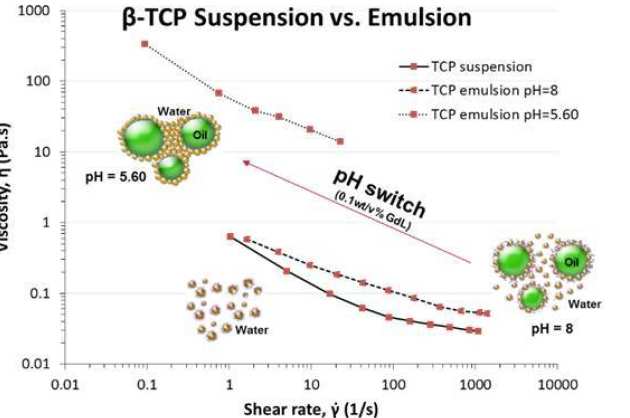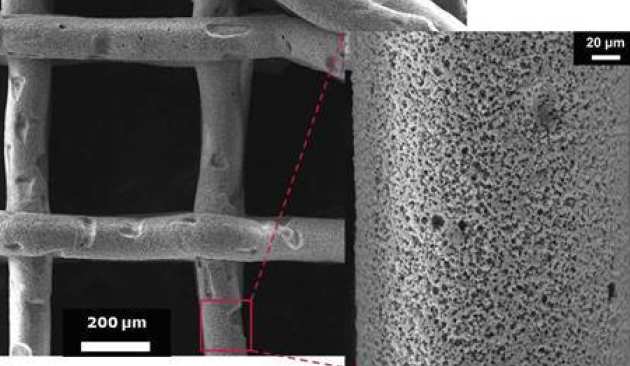Name: Gil Da Costa Machado.
Supervisor: Prof Eduardo Saiz.
Sponsor: Marie Curie ITN-FP7
After the initial characterization of the starting powders, the thermal behaviour of the materials with a biphasic composition (from pure Hydroxyapatite to pure β-Tricalcium Phosphate) was assessed and the optimal sintering conditions were established. Furthermore, an innovative emulsion-based soft templating method was used for the purpose of controlling structural features (porosity, pore size and interconnectivity) at the micrometric scale. The biological behaviour of such materials was studied in vitro by incubating them with human mesenchymal stem cells in an osteogenic medium.
Specific differentiation markers were measured to assess the osteogenic potential of the Calcium phosphate flat substrates with varying roughness profiles. Three-dimensional scaffolds were also produced through the robocasting of periodical structures with the emulsion based slurries. Printing conditions were optimised for different compositions and their bioactivity was evaluated through standard incubation tests in simulated body fluid.
An important goal of this work was to fabricate three-dimensional scaffolds with these materials - i.e., incorporating the microporosity and roughness that results from the emulsification process – while controlling structural features at a macrometric scale, such as pores with hundreds of micrometers where cells can penetrate and proliferate. For such processing to be possible, it is paramount to understand the rheological behaviour of these materials.
Fig. 1 shows how the apparent viscosity of the ceramic suspension and emulsion at different steps of the processing route varies with the shear rate. At basic pH (early in the process), the materials are very fluid. However, in order to be used in 3-D shaping techniques such as robocasting, they must simultaneously be fluid enough to flow through a nozzle during extrusion and be stiff enough to keep their shape after that. Therefore, the coagulation step (pH switch) previously mentioned is necessary, as it increases the viscosity of the materials roughly three orders of magnitude, making them suitable for 3D printing.
At this point, it is possible to make large scaffolds with controlled structures and geometries by extruding these particle stabilized emulsions. Fig. 2 shows a piece prepared through such method, on which it is possible to see the microporosity that results from the oil droplet templating and how it reflects of the final surface roughness of each printed rod.
These levels of structural control allow for an extremely versatile method of production of calcium phosphate scaffolds with varying chemical composition.

Figure 1. Apparent viscosity of both initial (TCP suspension) and emulsified (TCP emulsion) ceramic suspensions, and coagulated (TCP emulsion pH=5.60) emulsion after pH switch.

Figure 2 . Robocasted scaffold by extruding particle stabilised emulsion with HA.